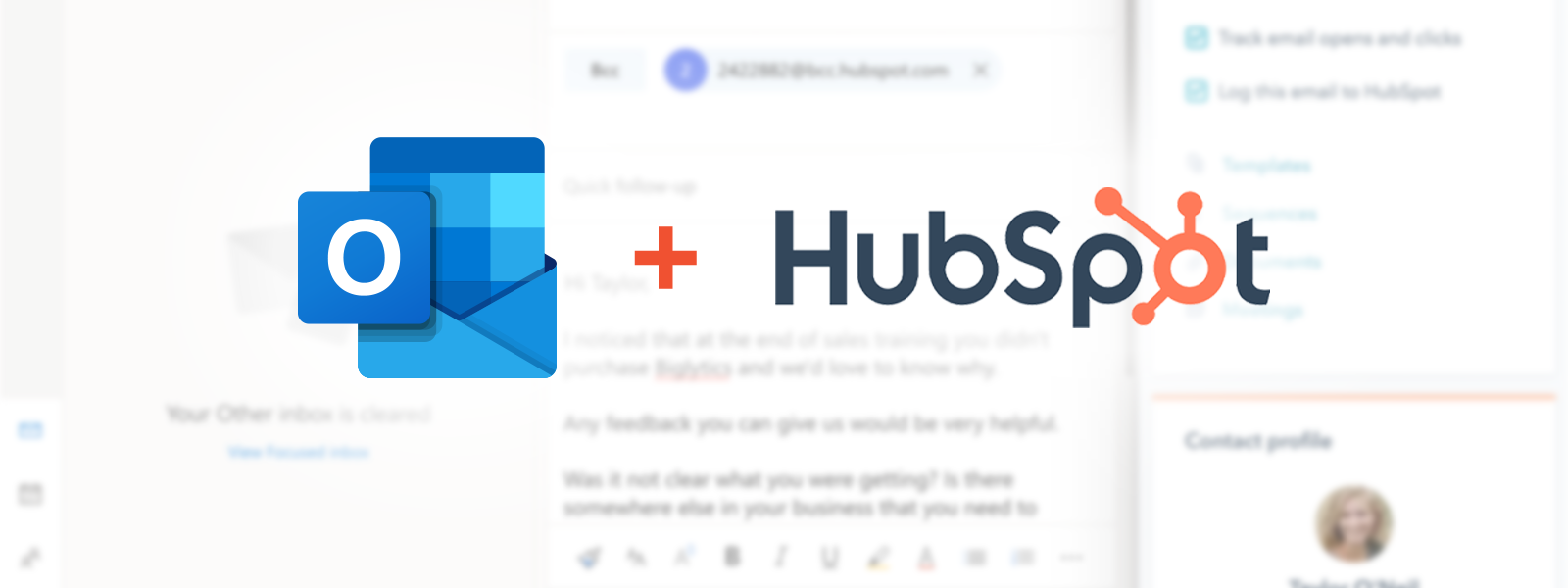What Is HubSpot and What Can I Do with It?
March 4, 2025

Tyler Samani-Sprunk

If you’re growing your business, you’ve probably heard of HubSpot. It’s one of the biggest names in marketing and sales software—and for good reason. It helps teams to stay organized, automate the boring stuff, and track what’s actually driving revenue — all in one place.
At Simple Strat, we know HubSpot inside and out because we use it every day—both for our own business and for the hundreds of companies we help each year as a Diamond-tier HubSpot Solutions Partner.
That said, we’ve noticed that while a lot of sales and marketing leaders have a general idea what HubSpot is, few are able to point to specifics about what teams can actually use it for. If that’s you, don’t worry—you’re in the right place.
HubSpot does a lot, so we’re here to give you the basics of what HubSpot is, and what tools it offers, so you can walk away with a good idea of what your company might need, and how HubSpot can help accelerate your growth.
What is HubSpot?
HubSpot is an AI-powered customer platform that brings marketing, sales, service, operations, and your whole website together in one place. Instead of juggling a dozen different tools that don’t talk to each other, HubSpot gives your team a single system that tracks every interaction with your customers, helping you stay organized and move faster
It automates follow-ups, keeps your pipeline in check, and makes reporting easy so you always know what’s working. Whether you’re trying to get more leads, close more deals, or keep customers happy, HubSpot helps you do it—without the headaches.
How HubSpot works across your business
HubSpot connects every stage of the customer journey. Take a look at just a few things you can do with it:
- Attract visitors – Publish blogs and podcasts, run social media campaigns, and launch targeted ads.
- Convert leads – Capture leads with landing pages, email sequences, and smart forms.
- Close customers – Hand off leads to sales reps with all historical interactions intact.
- Retain customers – Offer more personalized service at scale and automate customer engagement.
- Drive advocacy – Turn happy customers into brand promoters.
What can you do with HubSpot?
These days, a better question is what can't you do with HubSpot, because its capabilities have expanded drastically in recent years. The platform has evolved far beyond marketing automation—now, it’s a centralized customer platform that connects every part of your business.
Here’s a taste of what all that looks like in action:
- Host and manage your entire website – Build, optimize, and personalize your site with HubSpot’s built-in CMS, SEO tools, and dynamic content capabilities.
- Automate sales and marketing workflows – From lead nurturing and AI-powered follow-ups to automated deal tracking and pipeline forecasting, HubSpot helps teams stay proactive.
- Track and analyze performance across teams – Custom dashboards, attribution reporting, and revenue insights help marketing, sales, and service teams measure impact and optimize strategy.
- Break down data silos – A single source of truth across marketing, sales, service, and commerce ensures every team has the full customer picture.
- Align sales and marketing for better conversions – Shared data, deal intelligence, and automated lead qualification help teams focus on the right prospects at the right time.
- Customize and integrate with the tools you already use – sync real-time data across CRMs, ERPs, and other business systems, eliminating manual data entry.
HubSpot isn’t just a CRM—it’s an AI-powered growth engine that automates, optimizes, and scales with your business.
Sound like a lot? It is! And that's a good thing.
HubSpot has an extensive number of tools and the capability to make a difference in every part of the buyer’s journey. They spread their features across multiple “hubs” within the platform, where each hub provides a curated set of tools for each purpose. The hubs all work seamlessly together to give you a full suite of tools across your marketing, sales, operations, content, and support teams.
Here’s a quick breakdown:
- Unified CRM: Centralizes all customer data, forms the backbone connecting each hub.
- Marketing Hub: AI-driven content, SEO, and campaign management.
- Sales Hub: Predictive analytics, automated follow-ups, and AI-powered intelligence.
- Service Hub: Proactive support with AI chatbots and sentiment analysis.
- Content Hub: Enhanced CMS for dynamic, personalized websites to help convert leads.
- Commerce Hub: Integrated payment, invoicing, and subscription tools.
- Operations Hub: Robust data sync and automation across systems.

Image Source: HubSpot
You don’t need to sync your data back and forth between each section of the platform, because it’s all one unified system. Imagine your sales and marketing teams always being on the same page, or your customer service and sales teams being consistent with all their customer communications. HubSpot makes businesses run smoothly across the board.
Even better, HubSpot provides well over 1,000 integrations in their immense ecosystem, and since early 2023 has been expanding its artificial intelligence toolkit to include integrated generative AI tools. Some of these tools are similar to using ChatGPT for marketing, but they're specifically designed to be compatible with HubSpot features.
 Image Source: HubSpot
Image Source: HubSpot
You can also unlock access to each of their hubs individually with separate purchases, in case you don’t need all of them.
Before we dive into each of these hubs though, you should understand the HubSpot CRM, which is like the glue that holds it all together.
What is HubSpot CRM?
HubSpot CRM is the customer relationship management (CRM) platform that makes up the foundational layer of HubSpot tools, to organize, score, and track your leads and customers across hubs. This tool will save your team from using a spreadsheet (or multiple spreadsheets) to organize your contacts. Cue a round of applause!
What can you do with the HubSpot CRM?
- Get more complete contact data – keep track of everyone your business interacts with
- Track activities – keep tabs on calls, emails, and more for each customer
- See full pipeline visibility – easily view and organize contacts based on how close they are to a purchase
- Sync with Gmail and Outlook, for easy contact uploading
- Chat in real-time with customers and prospects – easily answer questions and build relationships
- Personalize messaging with Breeze Copilot – This in-app AI assistant helps draft emails, generate reports, and offer actionable insights by analyzing your CRM data, making daily tasks more efficient.
- Access better customer data with Breeze Intelligence – An enrichment engine that pulls in data from over 200 million buyer profiles, ensuring your CRM is always up to date with the most relevant customer information.
Beyond the basic CRM tools, there are multiple different hubs for different parts of your business, which you can either mix and match, or use all at once. This image below shows the core functionalities of HubSpot and how they fit together (the graphic omits some of the newer hubs, but it should give you a sense for how HubSpot helps you manage the whole customer journey).
Watch the HubSpot CRM demo and walkthrough
Want to get a feel for what it’s like to actually use HubSpot CRM? Watch this demo video for an in-depth walkthrough of the platform.
HubSpot helps your business leverage AI
HubSpot’s AI isn’t just about saving time—it’s about making your job easier and your team more effective. With Breeze, HubSpot has built AI directly into the tools sales, marketing, and service teams use every day, so automation and insights happen where you’re already working—not in some separate dashboard you’ll never check.
Here’s what that looks like in action:
- Breeze Copilot: Think of this as your AI-powered assistant that actually understands your work. Need to follow up with a prospect? It can draft the email for you. Want a report on how your last campaign performed? Just ask. It pulls insights from your CRM so you can stop digging through data and get straight to what matters.
- Breeze Agents: These are task-handling AI helpers built right into HubSpot. They can qualify leads, assign tickets, send follow-ups, and even route customer inquiries to the right person—automatically. No more “Who’s handling this?” conversations.
- Breeze Intelligence: Ever wish you had better data on your prospects? Breeze pulls in insights from 200 million+ buyer profiles to fill in the gaps. That means cleaner CRM records, smarter targeting, and way fewer wasted calls on bad leads.
How this changes your day-to-day
- For sales teams: No more wasting time on low-quality leads. AI helps you prioritize the best opportunities, nudges you to follow up at the right time, and even suggests what to say.
- For marketing teams: AI writes first drafts of emails, ad copy, webpages, and much more. It helps you tweak messaging based on past performance, and suggests which leads to focus on next.
- For service teams: No more drowning in tickets. AI can answer simple questions, escalate complex ones, and even predict which customers might churn before they do.
Breeze AI isn’t just a fancy add-on or slightly-repackaged ChatGPT variant like you see everywhere else—it’s built into every part of the platform to help teams work faster, smarter, and with fewer manual headaches.
The 5 HubSpot “Hubs” (and what you can do with them)
HubSpot Marketing Hub
HubSpot’s Marketing Hub in 2025 is built for smarter, faster marketing. AI-powered tools help you create content, predict what works, and personalize campaigns automatically. You get real-time insights, better sales alignment, and automation that actually saves time—so you can focus on strategy instead of busywork.
What's included in the HubSpot Marketing Hub?
- AI-driven content creation & campaign optimization – HubSpot’s AI Assistants help automate blog writing, email copy, and social posts while maintaining brand voice.
- Website personalization – AI-powered Smart Content dynamically adjusts web pages based on visitor behavior, location, or industry.
- Deeper sales & marketing alignment – Shared dashboards that track full-funnel metrics, ensuring both teams work from the same data.
- Landing pages – create webpages to drive conversions, and take advantage of conversion rate optimization tools like easy AB testing
- Emails – the last email marketing tool you’ll need: create and send personalized emails, automated with custom time delays and triggered by custom events of your choice, and much more
- Blogs – create compelling content to build trust with customers
- Social media marketing – schedule posts across platforms and engage with user comments, all from one central location
- SEO – get your website ranking higher in search results (and AI tools to increase your content output, just make sure you use AI correctly for SEO)
- Marketing automation – lower your workload by automating your workflows and processes for contacts across the buyer journey, while keeping a personal touch in your lead nurturing
- Predictive analytics & forecasting – Machine learning identifies high-value audience segments and campaign performance trends. Keep track of what’s working (and what’s not) across your marketing channels
HubSpot Sales Hub
Manage, communicate with, and track your leads with the HubSpot Sales Hub. With more visibility into the pipeline, your sales team is empowered to interact with customers without spending countless hours entering data, or writing the same emails time and time again. Essentially, the Sales Hub is the CRM on steroids, giving you more tools to close more deals.
What features are included in the HubSpot Sales Hub?
- Email templates – whip up emails quickly when you choose from premade templates depending on your needs
- Free calling – reach contacts directly with calling, and automatically log date and time of contact to make followups easier
- Email sequences – automated email flows, making it easy to follow up with leads and save time monitoring their interest
- Automated follow-ups & deal management – AI Agents draft personalized sales emails, schedule calls, and update CRM records based on deal progression.
- AI-powered forecasting & pipeline intelligence – highly accurate AI Forecasting predicts revenue trends, helping leadership set realistic quotas.
- Meeting scheduling – offer an easy way for leads to book appointments, such as meeting links
- Pipeline tracking – keep tabs on how warm your leads are, and easily find out when it’s the best time to close
- Playbooks — create a defined set of actions based on specific scenarios, to automate workflows and never miss a step when interacting with leads or customers.
- Lead scoring & prioritization – AI surfaces the most engaged and valuable leads, allowing reps to focus their efforts more effectively.
- Advanced automation for complex deal cycles – Workflows for multistage approvals, contract generation, and renewal reminders streamline the entire sales process.
HubSpot Service Hub
The customer service software from HubSpot makes it easy to connect with customers and manage those relationships. Because when your customers are happy, you’re happy—plus it helps you grow your business.
What does the HubSpot Service Hub include?
- Omnichannel support tools – Unified inbox and automation across chat, email, social, and phone for seamless service.
- Customer feedback – easily collect feedback, share key insights, and better understand customers
- Support tickets – one organized place to manage issues
- Live chat – on-site chat support to help solve customer problems
- Conversational bots – create bots to handle common issues and situations your customers might experience
- Automated ticket routing & prioritization – AI assigns tickets based on complexity, agent expertise, and workload, improving response times.
- AI-powered knowledge base – Uses natural language processing to suggest relevant articles during live chat, reducing support volume (The knowledge base is a point of reference to solve common problems, making it easier to scale, onboard new staff, and avoid reinventing the wheel)
- Reporting and goals – keep everyone on track and see how well their efforts are aligning with goals
- AI-powered sentiment analysis – Detects customer dissatisfaction early by analyzing interactions, reducing churn risk.
- Revenue expansion through service interactions – AI prompts agents with upsell recommendations based on a customer’s history.
Hubspot Content Hub (formerly HubSpot CMS Hub)
HubSpot's Content Hub is an AI-powered platform that seamlessly integrates your website with CRM and marketing tools, enabling personalized user experiences and efficient content management. It offers built-in SEO tools, analytics, and a user-friendly drag-and-drop editor, allowing teams to create, optimize, and adapt content without needing a developer.
What does the HubSpot Content Hub offer?
- AI-powered website builder – Generates web pages using AI based on brand guidelines, speeding up development.\
- Drag and drop website editor – no coding required, what you see is what you get
- Content Remix: Repurpose existing blogs, videos, and PDFs into new content formats at scale.
- Podcast hosting & video content tools – Built-in podcasting features and AI-powered video transcription for content diversification.
- CRM-powered content embeds – Personalize website content based on CRM data for enhanced visitor experiences.
- SEO tools – to rank better in search engine results
- Web analytics – track traffic flows and conversions across your webpages
- Attribution reporting – see which traffic sources and web behavior are most conducive to your desired actions and conversions
- Adaptive testing – easily AB test content to figure out the copy and design elements (for starters) that are most conducive to the results you want
Hubspot Operations Hub
Operations Hub is data-centric and facilitates automation. It helps you connect your apps, and to sync customer data across teams, clean up redundant data, and automate processes to take the “busy work” out of your day-to-day. This hub is a great way to avoid having a half-broken patchwork of software solutions as your business scales.
What does the HubSpot Operations Hub include?
- Data deduplication – avoid duplicate contacts and other messy data practices
- Real time, two-way data synchronization – avoid inconsistencies across teams
- Field mappings – avoid manual reentry of contact info across platforms
- Webhooks – share data across platforms when triggered by your custom events
- Custom-coded workflow actions – execute code (like JS or Python) to extend functionality within (or outside of) HubSpot
- Advanced data health & cleanup tools: AI-driven duplicate detection and automated data formatting ensure CRM integrity.
- Programmable automation & custom integrations: AI-assisted workflow recommendations optimize business processes.
- Snowflake data sharing: Enables direct data export for advanced analytics without manual syncing.
- Cross-platform workflow automation: Allows non-developers to build automated workflows between HubSpot and external software like SAP or NetSuite.
- Customer data quality dashboard: Tracks CRM hygiene and data consistency across integrated systems.
Commerce Hub
HubSpot’s Commerce Hub makes getting paid easier. Send invoices, manage subscriptions, and process payments—all inside your CRM. No more juggling tools or chasing payments—just a smoother way to handle revenue without the hassle.
- Integrated payments & invoicing: Convert quotes into invoices and process payments directly within HubSpot.
- Subscription management: Automates billing, proration, and renewal notifications.
- E-signature capture: Streamlines contract execution.
- Stripe integration: Enables seamless transaction processing.
- Revenue reporting & forecasting: Analyzes sales data to predict subscription revenue trends.
Each hub interacts with the others for seamless handoff between the entire lifecycle of your customers, so every team is on the same page. You don't have to purchase every hub, but each one you get multiplies the power of the ones you already have.
Please note that as each Hub has a few different subscription levels to choose from, some features may not be available at all subscription levels.
![]() Image Source: HubSpot
Image Source: HubSpot
What can HubSpot do? Here's a real-life example.
Let’s talk about Sally, a potential customer for your business, and see how HubSpot impacts her journey:
- Discovery: Sally finds your website through a Google search. HubSpot’s AI-powered SEO tools help optimize your content for search. (Marketing Hub)
- Engagement: She wants to know more, so she downloads a resource and subscribes to your newsletter. HubSpot personalizes her follow-up emails based on her interests. (Marketing Hub + AI Assistants)
- Tracking & lead scoring: HubSpot tracks her activity, scores her as a high-intent lead, and automatically notifies sales. (CRM + AI Predictive Lead Scoring)
- Sales outreach: A sales rep reaches out using an AI-suggested email, tailored to her interactions. She books a demo via HubSpot’s scheduling tool. (Sales Hub + Breeze AI)
- Onboarding: After she signs up for a free trial, HubSpot automates a welcome email sequence with onboarding videos and interactive guides. (Service Hub + Marketing Hub Workflows)
- Conversion: She makes a purchase, and Commerce Hub automates invoicing and payment processing. (Commerce Hub)
- Support & success: She has a setup question and interacts with an AI chatbot, which either resolves her issue or routes her to the right agent. (Service Hub + AI Agents)
- Retention & growth: HubSpot tracks her product usage and sends a well-timed offer to upgrade. Later, she refers a friend, who enters the same seamless journey. (Marketing Hub + Sales Hub)
This AI-powered workflow ensures Sally receives a seamless, personalized experience—from first touch to loyal customer—while automating key processes for your team, letting you accomplish what would normally take a much larger team. All of a user’s actions are tracked within HubSpot, helping your team know when and how to follow up.
As you can see, HubSpot is a powerful tool that can have a massive impact on your company.
Why we love HubSpot
Wondering why HubSpot is so popular? We know this was a lot of information about how HubSpot works, and how it can help grow your business. So we thought we’d share some of our favorite things about HubSpot while you wrap your mind around everything it can do.
Everything is in one place.
We see it all the time—teams wasting hours trying to sync data manually or struggling to get marketing and sales on the same page. HubSpot eliminates those silos by bringing your CRM, marketing, sales, service, and even commerce together in one seamless system. Every customer interaction—from a website visit to a closed deal to a renewal—is stored right there for you.
If you keep track of your customers in a spreadsheet or use different programs for your marketing and sales teams, we promise you: it doesn’t have to be that hard. We love HubSpot because it is the central hub (no pun intended) for everything in our company.
We use it to write our blogs, track our customers’ activity, and send our monthly emails. It streamlines communication for our team because we always know where things are. (Spoiler, they’re all in HubSpot).
It actually helps our clients close more deals
We’ve implemented and optimized hundreds of HubSpot portals, and one thing is crystal clear: businesses that use HubSpot’s AI-powered sales tools close more deals, faster. With predictive deal scoring, automated follow-ups, and AI-powered forecasting, sales teams can focus on the leads that actually matter instead of wasting time on dead ends.
Thanks to HubSpot (with the right implementation of course), we’ve seen companies go from chaotic, manual sales processes to highly efficient pipelines that practically run themselves.
Its AI-powered tools make growth a breeze.
From Breeze AI to advanced analytics, HubSpot lets our clients automate repetitive tasks, generate insights, and personalize outreach at scale. Instead of spending hours building reports, writing emails, or tracking down data, HubSpot’s AI tools help your team move faster, work smarter, and focus on what actually grows revenue.
It’s easy to track and measure success.
One of our favorite things about HubSpot is the data that you receive. Even better? They even updated their reports setup to make it easier to find the information you need to track key performance indicators (KPIs) and measure your success.
Everything is measurable and HubSpot makes it easy to navigate and find the information that matters most to you. You can even customize your reports or create dashboards to share across your company.
Outside of your onboarding call with your HubSpot rep, there are plenty of HubSpot tutorials and other video resources produced by accredited partners to help you along the way.
But it doesn’t matter if we love HubSpot, does it? The real question is, do you think it’s the right tool for you?
Pricing and packaging: flexibility for scaling
In 2024 HubSpot’s pricing model shifted to seat-based tiers, allowing companies to pay per user rather than by contact volume. This change benefits scaling businesses by:
- Reducing upfront costs for small teams.
- Aligning expenses with actual platform usage.
- Offering volume discounts for enterprises.
We’ll refrain from simply listing prices here because it varies widely depending on your needs, but if you want to make sure you purchase the right HubSpot package and avoid overspending, Simple Strat can help.
How to know if HubSpot is right for you
HubSpot is packed with tools to help businesses grow—but not every business needs the same thing. Some teams just want a better way to track customers and automate follow-ups. Others need a full system that connects marketing, sales, and service in one place.
So, is HubSpot a good fit for you? It might be if:
- You’re tired of bouncing between tools and want one system that connects marketing, sales, and customer service.
- You want to spend less time on manual tasks like following up with leads, logging emails, or building reports.
- You need better visibility into what’s working—whether that’s tracking your pipeline, measuring campaign results, or seeing where deals get stuck.
- You want a system that grows with you instead of one you’ll have to replace in two years.
- You don’t want to waste months figuring it out—you just want it to work the way you need it to from day one.
Since we've helped hundreds of companies implement and optimize HubSpot, we know firsthand that businesses get the best results when they start with a solid plan—not just a software purchase. In other words, HubSpot is powerful, but unless you implement it around your business goals, you won't be taking full advantage of your investment.
If you’re considering HubSpot (or want to get more out of your purchase), let’s talk. We’ll help you set it up right the first time—so you get the results you need, faster.

Tyler Samani-Sprunk
Tyler Samani-Sprunk is a co-founder of Simple Strat and leads the HubSpot Services team. As a top contributor to Martech.org and co-host of HubSpot Hacks, Tyler has an innate talent for solving complex problems and driving results with HubSpots. Subscribe to his admin-focused LinkedIn newsletter, The Orange Admin, for in-depth platform tips.
Relevant Blog Posts

HubSpot for Outlook: How to Stop Clicking and Start Selling
Using Microsoft Outlook? Connect it to your HubSpot account and simplify your workflow, with an integration that transforms HubSpot into your business’s central communication hub. Now you can see all...

5 Types of Emails Every B2B Company Should be Using in 2024
When we talk about email marketing strategy, most of us tend to think of one category: promotional emails. That’s typically because we tend to see email like a quick one-off: “We have new products,...

Email Marketing Best Practices: 11 Ways to Improve Results
It's easy to assume that email marketing is dead when your campaigns fall short of expectations. That’s because there are a lot of ways to get email wrong, and unfortunately lots of people end up...



